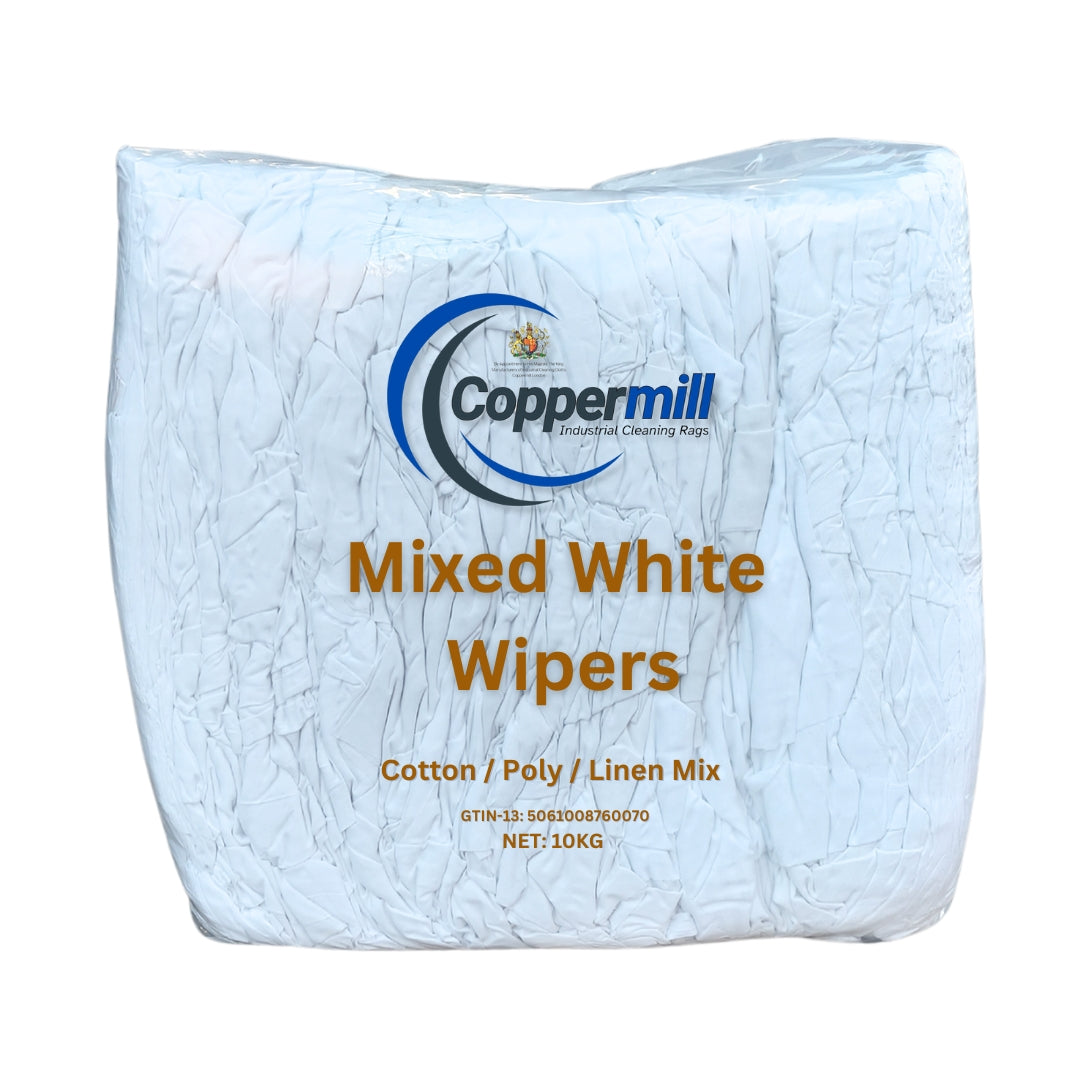
🧼 How to Get the Best Out of Your Mixed White
🗃️ Storage Tips: Keep Your Rags Clean & Ready
-
Use a Lidded Container or Dispenser Box
Keep your rags in a dry, sealed container to protect them from dust, dirt, and moisture. A plastic tub, dispenser box, or resealable bag works well. -
Label Clearly
If you're using different types of rags for various jobs, label containers clearly: "Mixed White – All Purpose", "Oil-Use Only", etc. This avoids cross-contamination. -
Store Off the Floor
Always place rag storage on shelves or pallets to prevent any dampness from the floor from seeping in. -
Rotate Your Stock
Use the First In, First Out (FIFO) method — always use the oldest rags first to avoid long-term compression or yellowing from age.
🧽 Usage Tips: Match the Right Rag to the Right Job
Our Mixed White rags are ideal for:
-
General cleaning
-
Spill control
-
Polishing
-
Surface prep
-
Grease wipe-downs
Here's how to get the most from each use:
-
Cotton: Best for Absorbency
In the mix, cotton components are great for soaking up liquids quickly — perfect for spills, window cleaning, or buffing. -
Polyester: Ideal for Durability
These rags can withstand repeated use and rougher surfaces. Save them for scrubbing and wiping machinery or tools. -
Viscose: Lint-Free & Soft
A low-lint option that’s great for delicate surfaces like glass, stainless steel, or electronics. -
Linen: Perfect for Polishin
Natural linen fibers offer a smooth, streak-free finish — great for drying glassware or polishing chrome.
🔁 Pro Tip: Reuse & Launder Smartly
-
Shake out after each use to remove debris or grit before reuse.
-
For light-duty tasks, rinse and air dry for another round.
-
For industrial use, consider bulk laundering services to get more life out of your rags.
Reminder: If a rag is used with chemicals, oils, or hazardous substances, dispose of it according to local waste regulations.
